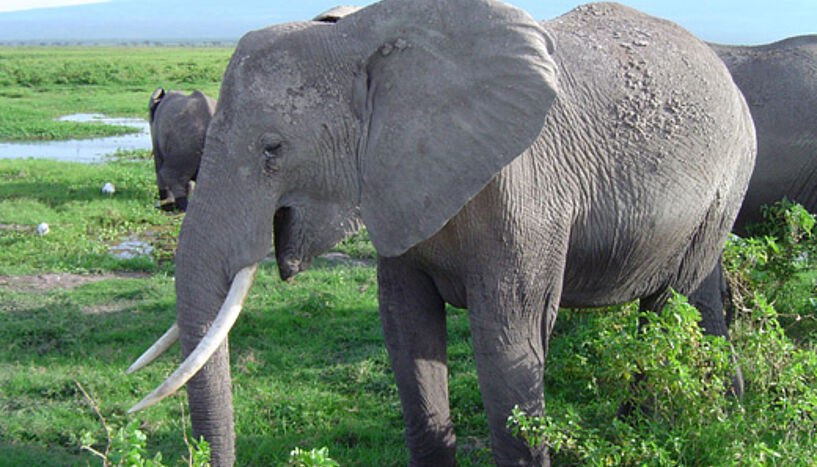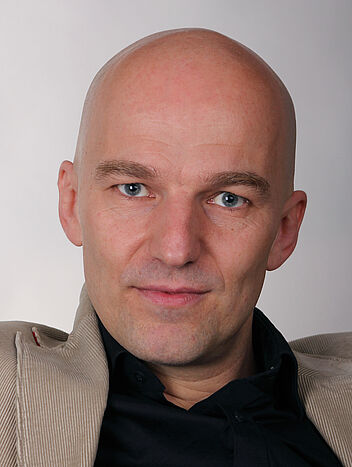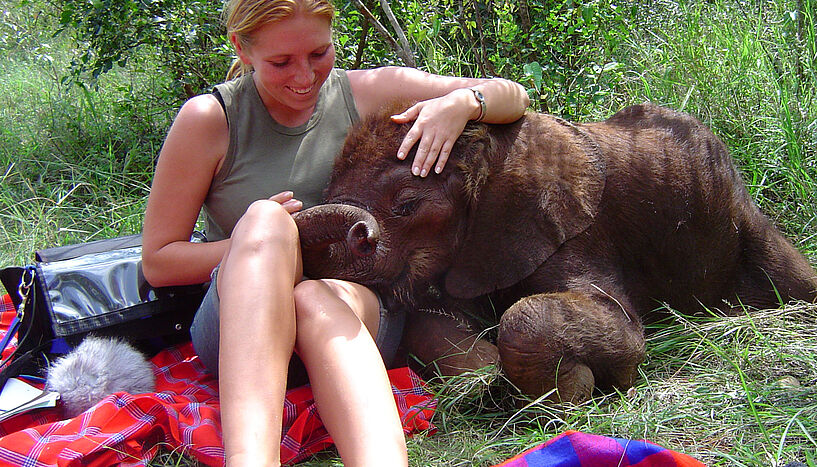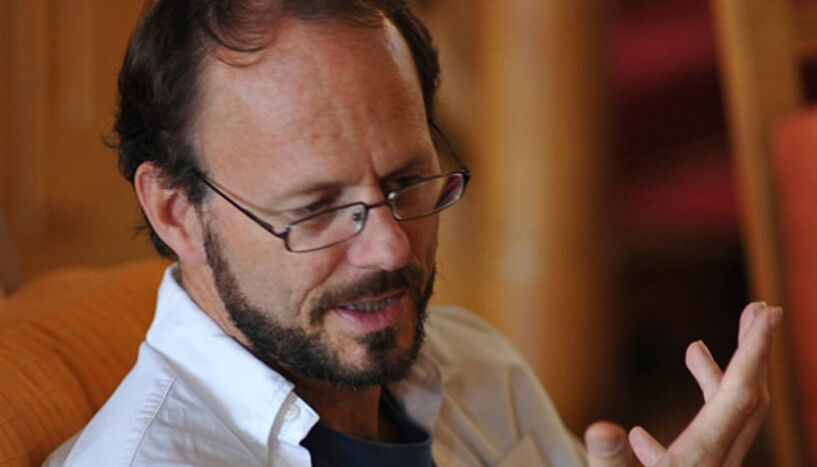Mystery of elephant infrasounds revealed
03. August 2012"Science": The physics of making very low sounds
In the current edition of "Science", an international team of voice researchers and cognitive biologists led by Christian Herbst, Angela Stoeger and Tecumseh Fitch, provides new insights into the production of Elephant communication. The so-called "infrasounds", i.e. sounds with pitches below the range of human hearing, are found to be produced with the same physical mechanism as human speech or singing.
Elephants can communicate using very low frequency sounds, with pitches below the range of human hearing. These low-frequency sounds, termed "infrasounds", can travel several kilometers, and provide elephants with a "private" communication channel that plays an important role in elephants' complex social life. Their frequencies are as low as the lowest notes of a pipe organ.
Although the sounds themselves have been studied for many years, it has remained unclear exactly how elephant infrasounds are made. One possibility, favored by some scientists, is that the elephants tense and relax the muscles in their larynx (or "voice box") for each pulse of sound. This mechanism, similar to cats purring, can produce sounds as low in pitch as desired, but the sounds produced are generally not very powerful.
The other possibility is that elephant infrasounds are produced like human speech or singing, but because the elephant larynx is so large, they are extremely low in frequency. Human humming is produced by vibrations of the vocal folds (also called "vocal cords"), which are set into vibration by a stream of air from the lungs, and don't require periodic muscle activity. By this hypothesis, elephant infrasounds result simply from very long vocal folds slapping together at a low rate, and don't require any periodic tensing of the laryngeal muscles.
To find out, researchers at the University of Vienna, led by voice scientist Christian Herbst and elephant communication expert Angela Stoeger, removed the larynx from an elephant (which died of natural causes), and brought it into the larynx laboratory of the Department of Cognitive Biology (headed by Tecumseh Fitch). By blowing a controlled stream of warm, humid air through the larynx (substituting for the elephants lungs), and manually placing the vocal folds into the "vocal" position, the scientists coaxed the vocal folds into periodic, low-frequency vibrations that match infrasounds in all details.
Since there can be no periodic tensing and relaxing of vocal fold muscles without a connection to the elephant’s brain, low-frequency vibrations in the excised larynx clearly demonstrate that the "purring" mechanism is unnecessary to explain infrasounds. Thus, elephants "sing" using the same physical principles as we do, but their immense larynx produces very low notes.
As an additional insight, the scientists were able to get a very clear look at some fascinating types of vibration called "nonlinear phenomena". When a baby cries, or a heavy metal singer screams, the vocal folds vibrate in an irregular manner, which is very grating to our ears. Young elephants also scream and roar, and the mechanism they use is again identical to that seen in humans.
This research shows that the physical principles underlying the human voice extend over a remarkable range, from bat's incredibly high vocalizations (too high for us to hear), all the way down to elephants’ subaudible infrasounds. How whales, the largest animals, make their even lower frequency sounds remains to be determined.
Publication in "Science"
How low can you go – Physical Production Mechanism of Elephant Infrasonic Vocalisation: Christian T. Herbst, Angela S. Stoeger, Roland Frey, Jörg Lohscheller, Ingo R. Titze, Michaela Gumpenberger, W. Tecumseh Fitch (Science 2012).
DOI: 10.1126/science.1219712
Scientific contacts
Dr. Christian Herbst
Department of Cognitive Biology
University of Vienna
1090 Vienna, Althanstraße 14
M +43-664-602 77-761 22
christian.herbst(at)univie.ac.at
Dr. Angela Stoeger
Department of Cognitive Biology
University of Vienna
1090 Vienna, Althanstraße 14
M +43-676-7837326
angela.stoeger-horwath(at)univie.ac.at
(Dr. Stoeger will be in South Africa studying elephants but is available for comment by phone)
Press contact
Alexandra Frey
Press Office of the University of Vienna
Research and teaching
1010 Vienna, Dr.-Karl-Lueger-Ring 1
T +43-1-4277-175 33
M +43-664-602 77-175 33
alexandra.frey(at)univie.ac.at
Video Files (see below):
CT1.mov: Animated reconstruction (bone and cartilage) of computed tomography (CT) data from excised African elephant larynx.
CT2.mov: Annotated animated reconstruction (mid-sagittal cut, soft tissue shown) of computed tomography (CT) data from excised African elephant larynx.
inVivo1.mov: Typical low-frequency ("infrasonic") vocalizations of a group of African elephants, recorded at the Addo Elephant National Park, South Africa.
inVivo2.mov: Typical low-frequency ("infrasonic") vocalization of a three year old male African elephant, recorded at the Vienna Zoo, Austria.
exLar1.mov: Phonation of an excised African elephant larynx in the lab: Warm humidified air is blown through the trachea into the larynx, resulting in passive self-sustaining vocal fold vibration (no neural input required).
exLar2.mov: High-speed video of periodic and irregular vocal fold vibrations of excised African elephant larynx at the laboratory bench.
Sound Samples (see below):
exLar.wav: Sound Sample Lab
inVivo.wav: Sound Sample Live Elephant
When the sounds (exLar.wav, inVivo.wav) are broadcast, published on a web site or published in any other way, the following statement must be included: "The difference observed in the two sound samples is caused by the fact that in the live Elephant, the sound, once created, is filtered by the vocal tract before it is radiated from the Elephant's mouth. In the excised larynx, no vocal tract is present for obvious reasons, and the sound is picked up by a microphone close to the vibrating vocal folds."
Copyright for all sounds and videos: Department of Cognitive Biology, University of Vienna.
Wissenschaftlicher Kontakt
Dr. Christian Herbst
Department für Verhaltens- und KognitionsbiologieUniversität Wien
1030 - Wien, Djerassiplatz 1 (UBB)
+43-1-4277-76101
christian.herbst@univie.ac.at
Rückfragehinweis
Mag. Alexandra Frey
Media Relations ManagerUniversität Wien
1010 - Wien, Universitätsring 1
+43-1-4277-17533
+43-664-8175675
alexandra.frey@univie.ac.at
Downloads:
African_Elephant.jpg
Dateigröße: 1,07 MB
Herbst_Christian_01.jpg
Dateigröße: 5,89 MB
Stoeger_Angela_01.jpg
Dateigröße: 1,29 MB
Fitch_Tecumseh_01.jpg
Dateigröße: 689,6 KB
CT1_small_01.mov
Dateigröße: 1,69 MB
CT2_small_01.mov
Dateigröße: 3,06 MB
exLar1_small_01.mov
Dateigröße: 1,35 MB
exLar2_small_01.mov
Dateigröße: 2,61 MB
inVivo1_small_01.mov
Dateigröße: 1,68 MB
inVivo2_small_01.mov
Dateigröße: 1,4 MB
exLar.wav
Dateigröße: 332,44 KB
InVivo.wav
Dateigröße: 1,4 MB




